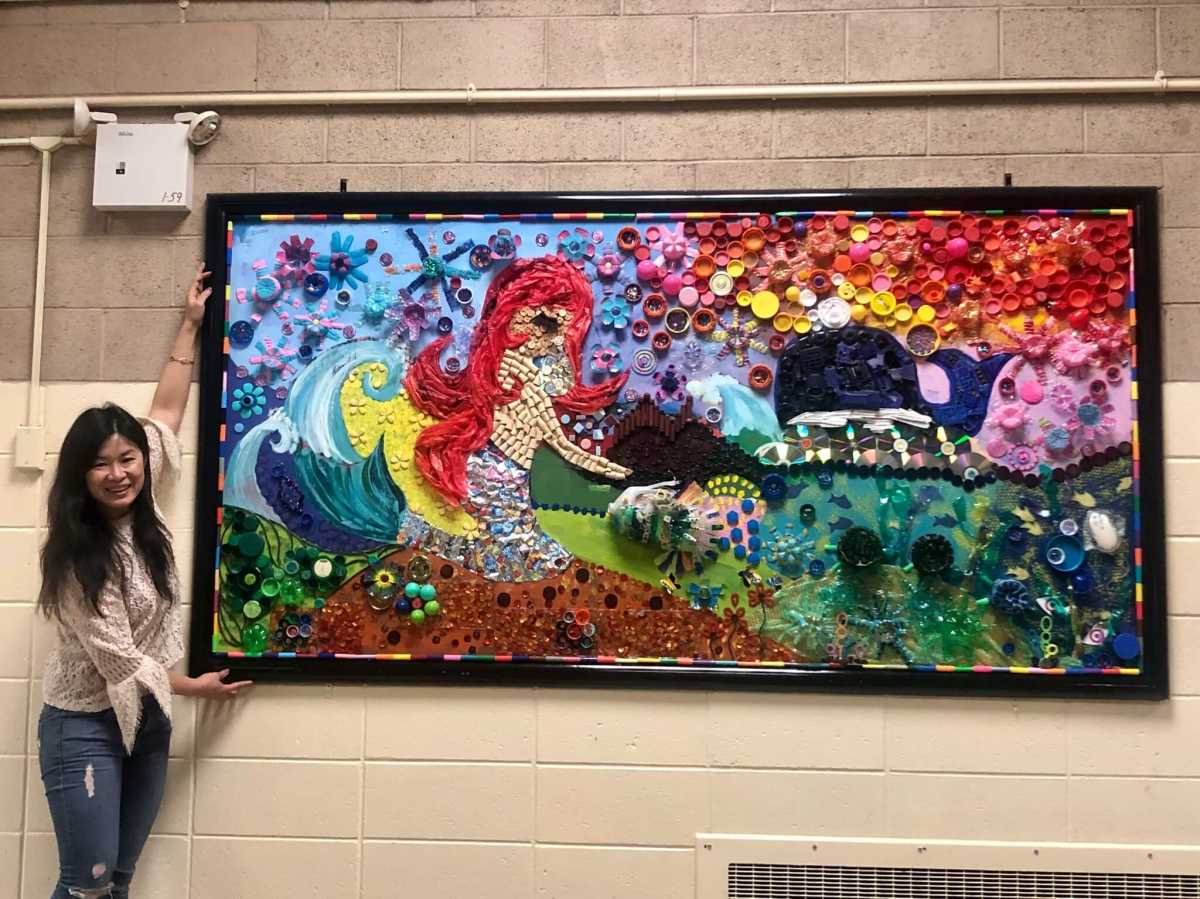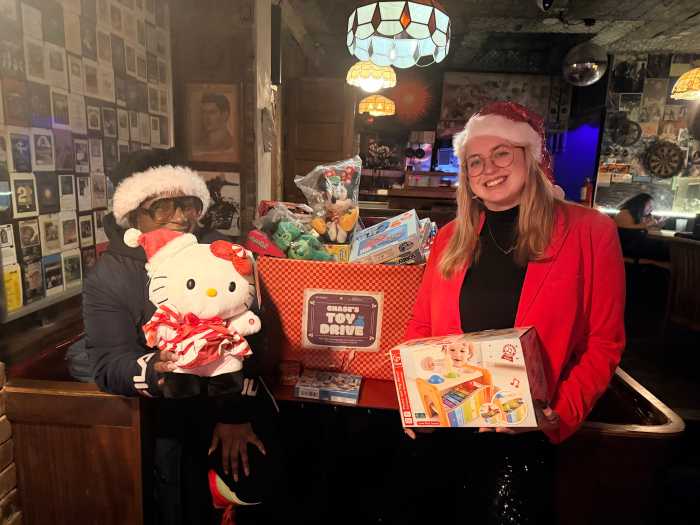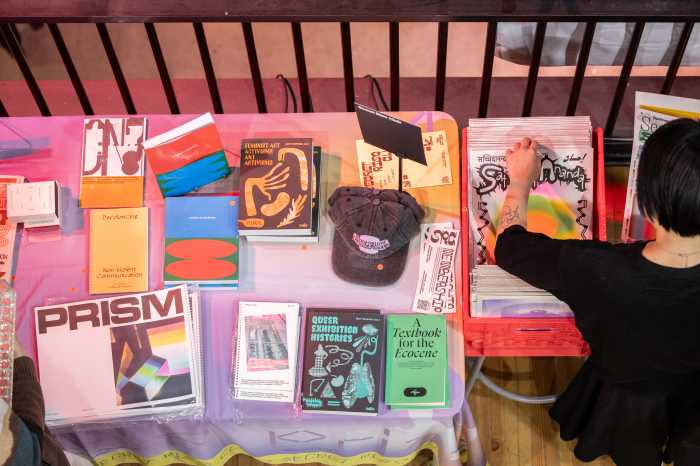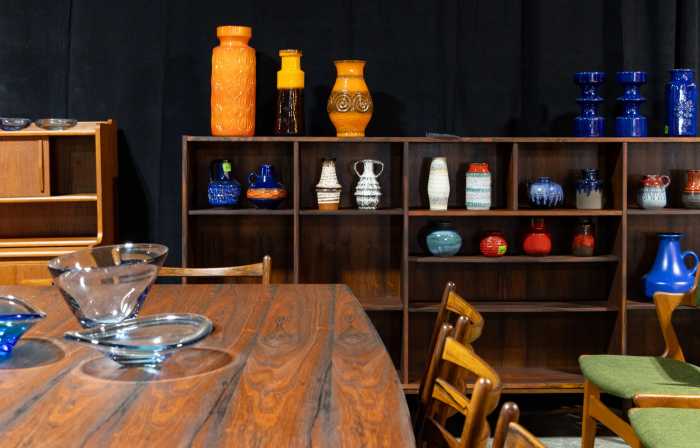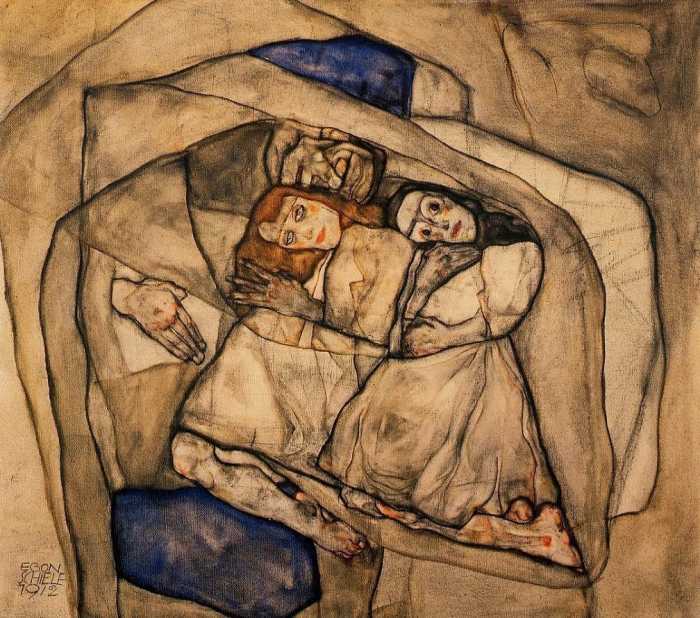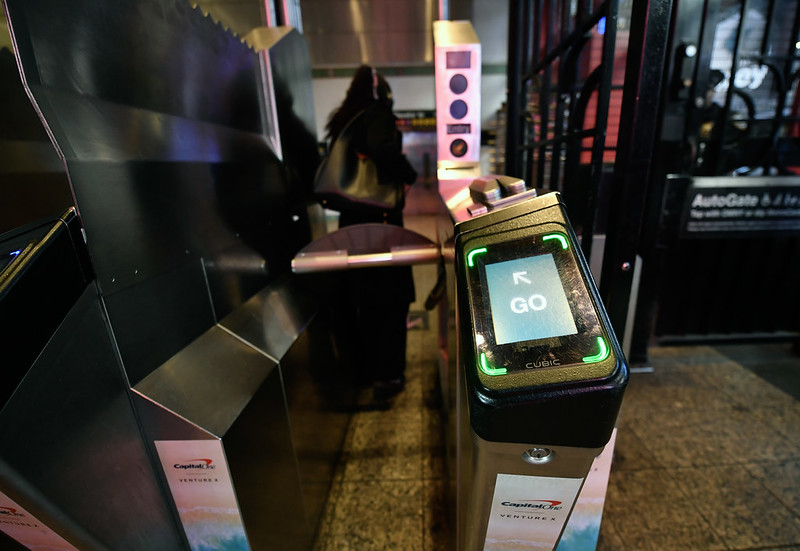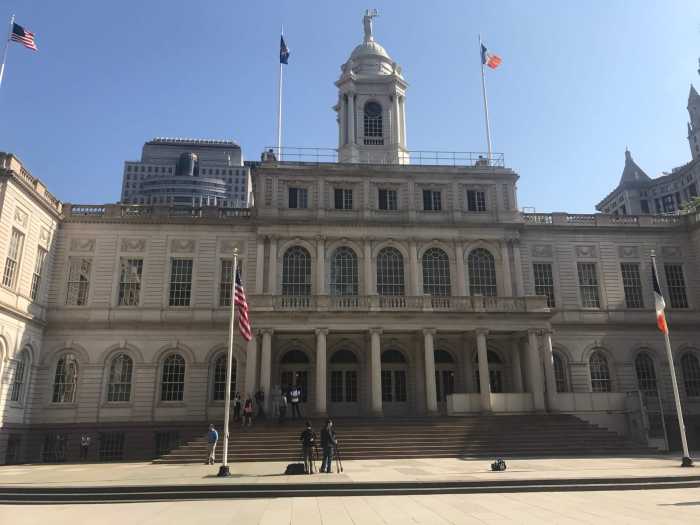If you walk down the streets of Brooklyn long enough, one thing will remain clear — the abundance of litter and garbage strewn about on sidewalks is inescapable.
Despite the efforts of the city’s sanitation department and dedicated residents, trash is ubiquitous and the amount of garbage is just something many people have become accustomed to.
However, one Queens-based artist wasn’t willing to accept the blasé or defeated attitude toward street pollution.
Wing Kong, an artist and environmental educator, initially started working with school communities about six years ago to educate students on the environment. While working within schools in Red Hook and Queens, she noticed that many of the single-use plastic utensils weren’t easily recyclable, and realized how much trash schools generate daily.
Initially intent on showing students and local communities how prevalent trash and littering were, Kong began to collect trash found in schools and in local parks to demonstrate the sheer mass of littered waste she found on a daily basis.
“I go around the neighborhood to different parks and just wander around and see, you know, how people interact with the parks,” Kong said. “Some people bring in food, they bring in things and they will just leave them.”
When schools closed down in response to the COVID-19 pandemic, Kong was unable to continue her work with children, but noticed that the influx of garbage and litter on the streets increased exponentially when restaurants and other businesses were forced to rely on more disposable single-use plastics.
“It is really mind-blowing that [when] the pandemic started, everything became disposable,” said Kong. “So there was this additional influx of trash everywhere and I [wanted] to utilize that and make it into something beautiful, yet has a big message behind it to connect with nature and the environment and human impact.”
Once Kong quickly realized just how much trash is left behind and how so many people seem oblivious to their own contribution to damaging the environment, she decided to use the trash she collected to create a visual representation of the litter through making intricate ocean-themed murals.

“My work is really to bring up the conversation and what next step we can do or the government can do to help minimize or solve this problem [of littering],” said Kong. “When the pandemic started, my programs at these schools also stopped so my next phase was partnering with the parks department, which I love because I am able to reach out to greater communities.”
With permission from the parks department, Kong began collecting trash and several members of her community as well as students joined her to help supply discarded materials for her murals.
“Children can be so creative and they can learn something about the environment and we can kind of do an experiment together.” Kong said. “All these little acts [are] a whole system that I have the students experience and create together into one big mural.”
These murals, she said, aim to depict how the world’s oceans in particular suffer due to the abundance of waste that is difficult or impossible to recycle and is instead just dumped into our oceans.
Since then, Kong has worked on several murals using collected trash to depict the dire effects of climate change and ocean pollution. In anticipation of World Ocean Day on June 8, she has opened an exhibition called “RECLAIMED HABITATS” featuring several of her murals at the Brooklyn Waterfront Artists Coalition in Red Hook, which will run until June 18.
Kong hopes that visitors will be able to view her work and reflect on their own potential contributions to pollution as well as think about lifestyle changes they can make to improve their community’s ecological health.
“I hope people will get goosebumps,” said Kong. “I get a lot of comments [from visitors] saying that they really feel in their hearts that they will think about reusing more. I will continue to make my murals until there’s no more trash in the public. But someone please stop me from making them.”


